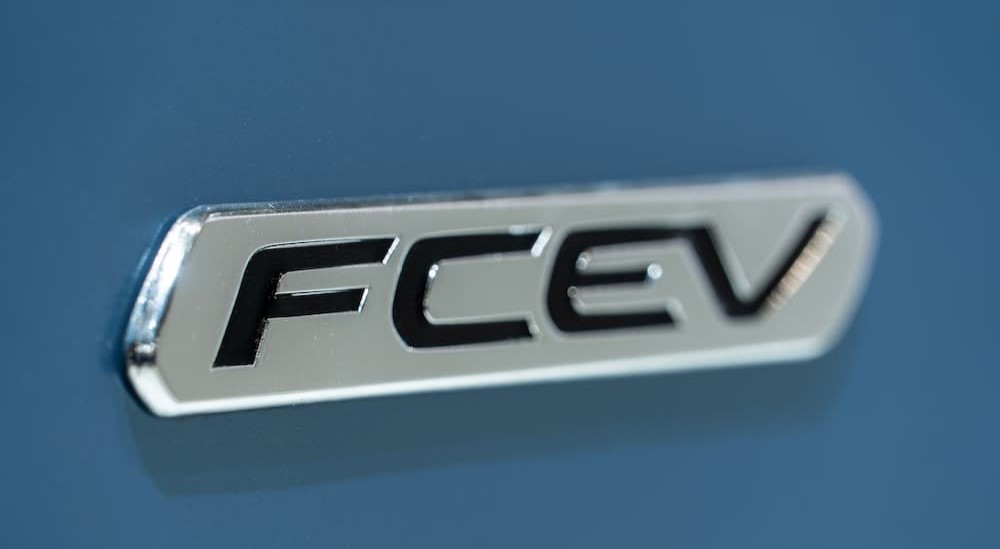With all the recent talk about hybrid and all-electric models, one type of alternative fuel vehicle has flown under the radar. Hydrogen vehicles––technically known as fuel cell vehicles (FCV) or fuel cell electric vehicles (FCEV)––have long been an enticing prospect for those looking to move past the current internal combustion paradigm. Given the fact that their main ingredient is the most abundant element in the galaxy, hydrogen vehicles could well represent the future of personal transportation.
But the road ahead is not necessarily a smooth one, and the technology still needs to overcome some major hurdles. While there are already two models on the market touting this new zero-emissions approach, sales have been steadily declining as of late. What exactly are hydrogen cars, and what are some of the significant roadblocks impeding widespread adoption? We’ll answer all this and more as we take a closer look at the state of the segment.
Give It Some Gas
Hydrogen-powered vehicles have been around a lot longer than many drivers might realize, with the technology first being put to use in 1860. That first hydrogen-powered car, known as the Hippomobile, wouldn’t qualify as an FCV or FCEV by modern standards as it relied on a two-stroke engine that burned hydrogen gas. Still, it illustrates just how long engineers have been trying to get a grasp on hydrogen vehicle technology.
General Motors gets credit for the first modern hydrogen vehicle, introducing the hydrogen fuel cell Electrovan concept car in 1966. This was the first vehicle to embrace the modern FCV approach, which uses fuel cells, along with a small battery or supercapacitor, to power an electric motor. The cells represent the hydrogen part of the equation, generating electricity using compressed hydrogen and oxygen collected from the surrounding air. While they’re still a rarity on the personal vehicle front, fuel cell technology has been used in niche applications for years. Forklifts, for example, often rely on fuel cells because the zero-emission technology won’t compromise indoor air quality in places like factories and warehouses.
The potential for FCV models is significant, especially from an environmental perspective. Unlike the average gas-powered vehicle, which emits 12,594 lbs of CO2 per year, the only things you’ll find spewing from the tailpipe of a hydrogen-powered car are water and heat. This obviously puts gas-powered vehicles to shame, but some might be surprised to learn that hydrogen vehicles also rank better than both hybrid and all-electric vehicles when it comes to annual emissions. According to the Department of Energy, hybrid vehicles produce some 6,898 lbs of CO2 per year, while plug-ins fare a little better at 4,824 lbs. EVs rank a distant second behind hydrogen vehicles at 2,817 lbs but still represent a four-fold improvement over their gas-powered cousins.
But wait, aren’t plug-in hybrid and all-electric vehicles marketed as “zero-emissions”? Well, yes and no. Plug-in hybrid models don’t produce any tailpipe emissions when they’re running in all-electric mode, but when the gas engine kicks in, it’s a different story altogether. All-electric vehicles might be even more of a head-scratcher, but there’s a simple explanation. While our cars have steadily become greener over the last few decades, our nation’s electric grid has not necessarily followed suit. In most cases, charging an EV will mean plugging into an outlet that’s drawing power from any number of non-renewable sources, with more than 60 percent of the country’s utility-scale electricity generation relying on fossil fuels. To be fair, hydrogen vehicles currently face a similar problem when it comes to producing hydrogen, which is an issue we’ll tackle in the next section as we lay out some of the key challenges facing hydrogen vehicles.
There’s also the matter of how these vehicles are produced. Today’s zero-emissions vehicles might be a major improvement over their gas-powered forerunners, but the creation of any automotive omelet still requires you to crack a few eggs. The large lithium-ion batteries used in today’s plug-in hybrid and electric vehicles require rare, expensive materials, which need a lot of energy to extract and process. For example, creating an 80 kWh battery for a Tesla Model 3 produces three to 16 tons of CO2, depending on the energy source. That’s potentially 80 percent more than a gas-powered vehicle of the same size, which takes a bit of the shine off these electric models. Hydrogen vehicles don’t escape completely unscathed as they also use lithium-ion batteries, but those batteries are much smaller on average––around 1.5 kWh compared to 80 kWh for a BEV or 15 kWh for a PHEV.
Hitting Roadblocks
Hydrogen vehicles might represent an exciting new future for personal transportation, but there are some growing pains that can’t be ignored. Let’s dive in and examine some of the major hurdles that are standing in the way of a hydrogen car revolution.
Fuel Efficiency
As we mentioned above, hydrogen vehicles have the potential to be a lot more efficient than other types of alternative fuel vehicles, but they’re not quite there yet. A lot of this has to do with the energy required to produce hydrogen in the first place. It takes around 50 kWh of electricity to split nine liters of water into one kilogram of hydrogen gas. If the electricity was being provided from 100-percent renewable resources, hydrogen vehicles would far and away be the cleanest approach, but all too often, that’s not the case. In fact, a recent study by the University of Queensland in Australia found that if the fuel for a hydrogen vehicle is being produced from non-renewable sources––commonly known as “brown” hydrogen––it can produce as much as three times more pollution than an all-electric vehicle.
Competition
With so much energy and enthusiasm concentrated in the electric and hybrid sectors, hydrogen vehicles have taken a bit of a backseat as of late. This technology has never been as popular as some of the more electric avenues, but it’s actually beginning to trend in the wrong direction entirely. While electric car sales in America have ballooned from 0.2 percent of the market in 2011 to 5.6 percent in 2022, hydrogen vehicles have lost ground. According to data from the Hydrogen Fuel Cell Partnership, hydrogen vehicle sales are down 30 percent so far in 2023, with just 725 units sold in the first quarter. In fact, over the last 11 years, fewer than 18,000 hydrogen-powered vehicles have been sold in the country. To put that in perspective, Toyota has sold more of its Supra sports cars in the last four years than the entire hydrogen segment over the last decade.
Infrastructure
It’s tough being an early adopter. You might invest in that enticing vision of the future only to find yourself fighting against the current when it comes to something as simple as finding a place to fill up. The country’s hydrogen vehicle infrastructure is still in its infancy, which can make it a tough sell for the average driver. Most of the country is completely devoid of fueling stations, making road trips a challenge when you travel beyond the urban bubble. Case in point: the only two FCVs for sale in America are limited to the California market because no other states have a hydrogen fueling network. Then there’s the matter of repairs and maintenance. Finding a trustworthy, qualified mechanic can be difficult at the best of times but is especially tough when you’re dealing with a relatively new technology like an FCV. If you can find a shop that’ll do the work, expect a hefty bill, as that type of expertise doesn’t come cheap.
Transportation
Unlike electric vehicles, which can piggyback off the existing power grid, hydrogen vehicles face a significant transportation issue. Transporting hydrogen fuel requires special tankers, permits, and personnel, which can significantly add to the fuel’s cost and further reduce its practicality. These costs are expected to drop as more infrastructure is developed, but it’s almost always going to be a less efficient option than gas and certainly less than electricity. There’s also the environmental factor to consider since the vehicles transporting hydrogen gas aren’t usually hydrogen-powered, meaning more CO2 emissions as part of the process.
Cost
In order for any new technology like hydrogen vehicles to take hold, they need to be within the reach of the average consumer. Hydrogen vehicles face a real uphill challenge in this department for a number of reasons. First off, their hydrogen powertrain and energy-intensive fuel mean they’re more expensive to produce and operate, and as we mentioned, transportation costs can be prohibitive. There’s also the matter of scale: with so few hydrogen-powered vehicles on the road, fuel is always going to be expensive, not to mention challenging to find. The two FCV models that are currently available start at $49,500 and $60,135, making them considerably more expensive than the $48,000 average price of a new car.
Leading the Way
Hydrogen fuel cell vehicles could well be the future of transportation, but they still have a long way to go. This true zero-emissions technology holds a lot of promise, allowing drivers to end their reliance on fossil fuels while avoiding many of the pitfalls that come with EVs and their expensive, pollution-producing batteries. Still, there’s a reason FCVs have been sidelined in favor of electric and hybrid options. From cost and infrastructure woes to fuel efficiency and logistical challenges, there are still a few major hurdles that hydrogen fuel cell vehicles will need to overcome if they hope to become a force to be reckoned with in the industry. Toyota and Hyundai earn points for diving headfirst into the segment, and the Mirai and Nexo are both alluring options, but it’s tough to get past the fact that they can only be reliably operated in a single state. With any luck, some major breakthrough or innovation will help make FCVs more viable in the future, but for the time being, they still seem to be suffering through their awkward teenage years.




